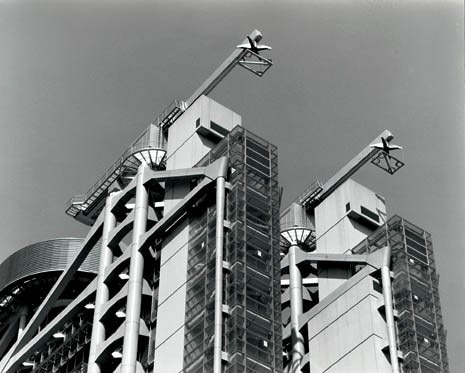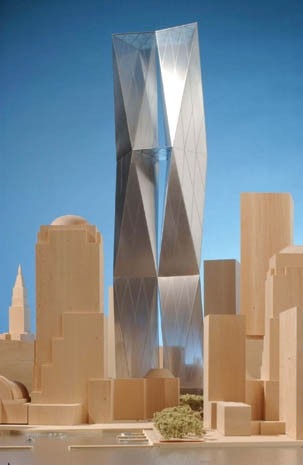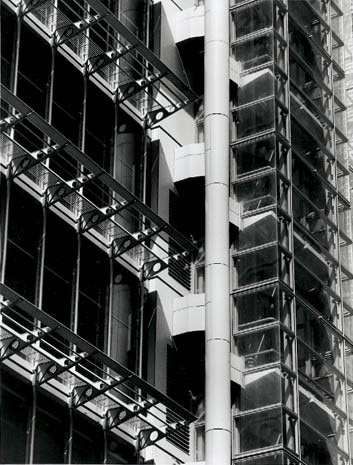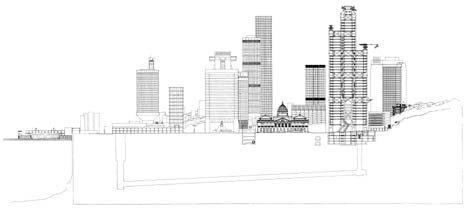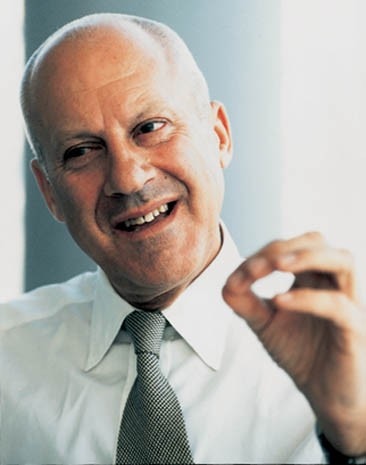Norman Foster is a phenomenon. There is literally nobody else quite like him, even though in Germany at least there are quite a lot of architects who try tremendously hard to be exactly like him, even down to putting the rotis typeface that Foster’s friend the late Otl Aicher designed on their letterhead just like Foster and using the trademark handwriting on their drawings and building mid career Foster style slick-tech.The nearest I suppose would be SOM in its glory days under the leadership of Gordon Bunshaft. Except that SOM was started by three partners and ended up as a polycentric coalition spread all across America.
Foster has his partners, talented individuals who have been with him three decades, but no matter how well some of them could have done on their own, there is no question that what is now called Foster and Partners is just that, a vehicle that Foster has created which has become very good at turning out architecture that seduces even the most sceptical of clients.
Foster presides over an architectural practice that has more than 500 employees. He is building, or has built, or is going to be building, in China and the United States, in Germany, Spain, France, Singapore, Saudi Arabia, Japan, Malaysia, Hong Kong, Switzerland, Holland, Italy and Britain. He has built airports and parliaments, individual houses and skyscrapers, museums, concert halls and libraries and universities. And that is without even mentioning his industrial design divison which designs taps and tables and chairs. Or his model workshop that turns out the scores of detailed mock ups prototypes and design studies that are an essential part of his working method. They are so many of them, and they are of such quality that they are stored in a series of fine art warehouses normally used for museum grade works of art.
He has restructured the British Museum, built the new Reichstag and designed the new Wembley stadium. In his life style Foster lives up to the role that he has created. He pilots his own jet; he used to fly his own helicopter. He ran the London marathon. There is a chauffeur driven Range Rover and an extraordinary apartment with a 180 degree view of the Thames sitting on top his office six floors below, in a building that he designed himself naturally. He has not just been knighted, he was made a peer so that he is now entitled to call himself Lord Foster.
He is also a member of Britain’s Order of Merit, one of the few relics of the British honours system that still really counts. It goes only to that tiny handful of individuals judged by the British establishment to be seriously gifted intellectually or creatively. But there comes a point when all these achievements can become almost a handicap for an architect.
When Foster was young, in the days when he worked briefly in partnership with the equally youthful Richard Rogers, he produced architecture of brilliance on a drawing board propped up in a corner of his flat. He was an outsider who went on to build at least three projects of undisputed genius: Willis Faber, the Sainsbury Centre and the Hongkong and Shanghai Bank. But now that he is no longer an outsider, and needs to keep the 500 strong machine moving with a constant supply of projects, his work is no longer automatically hailed as brilliant.
Of all the architects locked in the increasingly undignified battle to rebuild the World Trade Center, Foster’s may not be the most radical proposal, but it is the one that looked convincing enough to be built as soon as it was published. And it looked a lot more confident than some of the partnership’s recent efforts at rediscovering its radical roots. When he unveiled it, the hissing intake of breath from his competitors was audible: you could feel a sense run through them that they had been outspent, outmanoeuvred and outgunned: he was seen as a european who had dared to be more American than the Americans.
He was the one to beat; and it was the image of Foster’s twin towers merged into a single structure with a debt to Brancusi that made it onto the front page of the New York Post as the front runner, a position that was only gradually undermined as the more culturally attuned architectural commentators began to chip away at Foster’s presumption.
Why is it, asked the New York Times, that when the British look over the horizon they see only Singapore? It was the prelude to the paper backing Daniel Libeskind for the World Trade Center. In fact Foster had poured everything he had into the project, and was clearly determined to win: he always is, but this time more than ever. If he doesn’t, it won’t be for want of trying.
